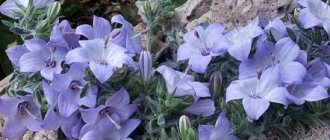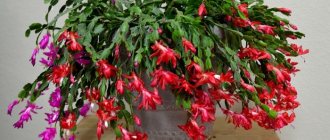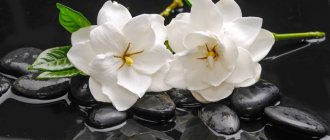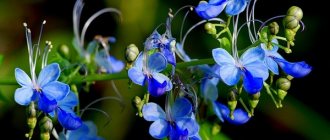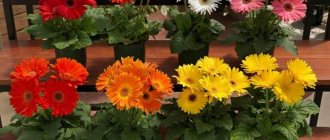Among the colossal variety of varieties of queens of the autumn garden, the Zembla chrysanthemum remains one of the most popular, especially among indoor flowers. Many people seek to purchase a potted and already blossoming specimen as a gift or for their home greenhouse. And few people know that this amazing flower feels great not only indoors, but also when grown in open ground.
Description of the plant
This is a perennial (many people prefer to cultivate Zembla as an annual) herbaceous plant and belongs to the family Asteraceae or Compositae, the second name.
Literally translated it means “golden-flowered”, “sun flower” - since the yellow color of the inflorescences is the most common among all types of chrysanthemums.
According to one of the many legends, when a dragon got burned while trying to steal the sun from a man, he flew into a rage and began to torment him, tearing apart a fireball, and the sparks falling to the ground became solar flowers.
It is believed that the Chinese were the first to cultivate this plant, naming their ninth month of the year after it.
And only later did the Japanese become so interested in it that the flower became part of their culture. Their admiration for this charming flower manifests itself in different areas of life; they literally idolize it. Thus, he became their national symbol, his image was allowed to be worn on clothes only by members of the imperial family (whose veneration is a special topic of conversation), the highest award of this country is named after him, and an annual holiday is held in his honor.
The Dutch discovered the chrysanthemum to Europe at the turn of the seventeenth and eighteenth centuries, but it took another century for it to become widespread. And only in the nineteenth century it became a common crop in European gardens.
In China and Japan, chrysanthemum flowers are used as food, but most often they serve as additives when brewing tea. This tea loses its astringency, acquires a soft floral taste, it tones the entire body and relieves headaches.
Chrysanthemum today is everyone’s favorite flower and in garden cultivation it is second only to roses in popularity.
Growing
Green chrysanthemum can be grown and propagated in three ways:
- seed material;
- cuttings;
- dividing the bush.
When propagating chrysanthemums by cuttings, you first need to separate the strongest side shoot of an adult plant, after which it is planted in open ground.
You can also purchase an already rooted shoot in a specialized store. In this case, it is simply planted in the ground. It is recommended to do this in the spring.
If you want to propagate chrysanthemum by dividing the bush, then you need to divide the plant into 2-3 parts (depending on how thick it is). They are planted in open ground.
Green chrysanthemum requires compliance with certain maintenance rules. This flower does not tolerate waterlogged soil. The plant should not be watered too much. If you plant it in a container, then be sure to place drainage at the bottom. Otherwise, it may become infected with a fungus, or various pests may appear on the flowers.
In mid-summer, you should water the flower abundantly at the root. This should be done with warm water. There should be at least 4-5 liters per bush.
At the end of summer and early autumn, as the chrysanthemum begins to bloom, watering should be reduced to 2 or 3 liters of water per bush. In mid-autumn, moistening the soil should only be done if the weather is too warm and dry.
Don't forget about loosening and mulching. The soil is loosened next to the flower every 10-12 days. The second procedure should be carried out in early spring and autumn before covering the plant for the winter. For this, humus and peat are used.
In small-flowered varieties, before the first frost, the entire above-ground part should be cut off at ground level. The remaining root system of the plant should be covered with spruce needles, straw or spruce branches.
Bush chrysanthemums should be pruned periodically. This will make the plant as lush and voluminous as possible. It is worth cutting off the tops of the bushes. It is necessary to remove all damaged and old branches. This will prevent the development of various diseases.
It is also necessary to fertilize the bushes regularly. Feeding should be selected depending on the time of year. In summer and spring, it is better to use compounds with nitrogen. They will activate the growth of the flower.
At the end of summer, you can fertilize the chrysanthemum with compounds containing potassium and phosphorus. They promote abundant flowering. In the autumn, nitrogen fertilizers should not be applied, because they can cause the shrub to grow without flowers.
Sometimes small worms appear on green chrysanthemums, resulting in white spots on the leaves. In this case, all damaged plants should be collected and burned immediately. As a preventive measure, you can use the Phosfamide solution.
Chrysanthemums are often affected by gray rot, rust, and various viral diseases. They lead to damage to leaf blades and root systems. In this case, the flower should be treated with Actellik, Calypso, and Aktara.
Diseases and pests
Chrysanthemums are susceptible to diseases caused by fungi: gray rot, white rust, powdery mildew and septoria. Control measures: removal of all diseased parts, treatment of the bush with fungicides. If, next to chrysanthemums that look healthy, there are crops affected by some disease that is dangerous to them, it is advisable to carry out preventive spraying of the flowers with solutions of fungicidal preparations. This will protect them from diseases.
Chrysanthemums can be parasitized by aphids, mites and bugs. You can notice that the plant is suffering from pests by the deformed leaves with swellings (aphids and bugs) and the cobwebs on them (mites). Immediately after detecting pests, treat the chrysanthemum with folk remedies or insecticides. Usually 1 procedure is enough. Without treatment, a weakened plant will not be able to prepare for flowering, the buds will become small, ugly, or there will be none at all.
Methods of propagation of chrysanthemum indicum
The method of propagation of the crop is chosen by the gardener individually. The seed method and cuttings are used.
Growing from seeds
For propagation, it is necessary to first grow seedlings. The following list of actions is performed:
- At the beginning of March, it is necessary to prepare containers for seedlings and fill them with a nutrient mixture. Ready-made substrate can be used. However, many gardeners prepare the soil mixture themselves. To do this, mix in equal parts: turf soil, humus and peat.
- The prepared soil must be disinfected with a light solution of manganese or exposed to low temperature (frozen).
- Place the seeds on top of the soil and water with warm water using a spray bottle.
- Cover with glass and place on the windowsill.
Growing a crop from seeds
Shoots will appear in 2 weeks. In some cases, it is recommended to use a fluorescent lamp. Since the seed of the crop is small, the beds are planted densely. After the emergence of seedlings, it is necessary to thin out the beds, leaving stronger specimens.
Important! Seeds can be planted in open ground; such planting takes place in mid-May. However, often such seedlings begin to bloom only the next year.
Rooting cuttings
This method is used very often. For propagation at the beginning of summer, it is necessary to cut the chrysanthemum shoot into cuttings 15 cm long. Place in Kornevin for 2 hours and plant in open ground.
Cover with cut plastic bottles on top. In hot weather, regularly ventilate and care for the cuttings. Observe daily watering. In the fall, transplant the cuttings into a pot and store them in a cool place.
Chrysanthemum cuttings
Caring for an indoor flower
Caring for an indoor flower consists of several stages, following which you can grow a healthy and beautiful plant.
Humidity
In order for the plant to feel comfortable and develop well, it must be sprayed several times a week and watered once every 3 days, but moisture should not stagnate.
If there is insufficient watering, the root system of the flower can dry out and cause its death.
If there is insufficient watering, the chrysanthemum may dry out.
Top dressing
Indoor chrysanthemum responds well to the application of various fertilizers, so this procedure is an integral part of growing the plant.
Fertilizers are applied according to the following scheme:
- In order for the flowering to be more abundant and bright, during the growing season the chrysanthemum is fed with organic fertilizers every 7-10 days. For example, a mullein solution prepared in a ratio of 1:10. This procedure is repeated until the first buds appear;
- In the autumn, complex mineral fertilizers are applied to the soil. Also during this period, you can use fertilizers that contain nitrogen, potassium or phosphorus.
Fertilizer for chrysanthemums
Pruning potted chrysanthemum
It requires careful attention, so pruning needs to be done several times a season:
- Once in the spring and 2-3 times at the beginning of summer it is necessary to pinch the tops. Thanks to such actions, a compact, non-overgrown crown is formed;
- as soon as the inflorescences begin to fade, they are immediately removed so that the plant does not waste energy holding them;
- If you want to get a miniature decorative flower, during the winter growth of shoots they are shortened by 1/3 of the total height.
Care after flowering
One of the main mistakes when growing chrysanthemums is improper wintering of the plant. It is worth considering that this bush flower is most adapted to open ground, so it needs to be created in conditions close to natural.
After the plant has finished blooming, it must be trimmed so that only stumps remain. Such actions will allow the plant to enter the resting phase and regain strength.
Before wintering, the chrysanthemum is cut almost to the root
For the entire winter period, the flowers are transferred to a room with a temperature of 2 to 5 degrees, do not feed, and watering is done once every 10-14 days.
During the same period, it is advisable to transplant the flower into a new pot or replace the substrate. Only after this can the usual regime of fertilizing and watering be restored.
Homemade chrysanthemum will undoubtedly decorate any room
Its colorful flowering and beautiful appearance will attract attention and hold gazes on itself.
The main condition for growing such a plant will be compliance with the temperature regime and timely implementation of all necessary procedures.
Zembla chrysanthemum: description of the species, reproduction, care and pest control
What features does the Zembla chrysanthemum have?
Chrysanthemum is native to Southeast Asia. The flower became widespread in Japan. People associate Japan with chrysanthemum and sakura. The name translates as golden flower or sun flower, due to the prevalence of yellow in the petals of any variety. The plant belongs to the Asteraceae or Compositae family. One of the months of the year in Chinese culture is named after a flower, so it is generally accepted that its cultivation began in this country. The plant became widespread among European countries in the 19th century thanks to the discovery of the Dutch.
In Asian countries, the flower is used to brew teas. The beneficial properties of chrysanthemum have been known since ancient times. It helps fight migraines and also maintains the tone of the whole body.
In the modern world, this flower is in second place after roses in popularity.
Varieties
Chrysanthemum Zembla has the following most popular subspecies:
- Lilac. It has a large bud with wide petals, mostly light pink in color. The stem develops up to 90 cm in height. Tolerates winter in a flowerbed.
- White. So named due to its dazzling white petals. The large white crown has a greenish center.
- Yellow. Belongs to early varieties, characterized by very large buds up to 15 cm in diameter. Yellow chrysanthemum blooms already in September.
- Lime or Brazil. Bush chrysanthemum, distinguished by a combination of white and light green leaves and a lemon-green border.
- VIP. The hybrid has a small bush with a large number of double flowers. The petals are painted light pink, with the presence of purple and lilac inclusions.
- Purple. Characterized by large purple buds. Blooms for a long time.
- Pink. It is distinguished by its particularly long-lasting durability after being cut from the bush. It has huge flowers with pink petals.
What features does the Zembla chrysanthemum have?
The Zembla chrysanthemum is popular among gardeners for growing in the garden, but some have had good success flowering in a pot. Therefore, a home series of the variety was cultivated.
Main distinctive features:
- Zembla is a variety of chrysanthemums with large spherical flowers. Bush garden chrysanthemum reaches a bud diameter of 10-25 depending on the variety; at home you can grow a flower up to 12 cm. Visually it looks like a branch of medium thickness, less than a meter high, with three buds.
- The period of active flowering occurs from the beginning of September to the end of autumn. Thanks to the thick and fairly elastic stem, once cut, the flowers can stand in water for up to weeks.
- Grown as single stems and bushes, it has a wide range of petal colors - from natural neutrals to bright ones. Most varieties have green central petals.
Chrysanthemum Zembla: features, care, photos
How to care for Zembla chrysanthemum? This variety does not require any special care. At home, care and maintenance are carried out in the same way as for any other variety of chrysanthemums.
- The soil must have good drainage.
- It is recommended to provide the flowers with bright sunlight, at least 5 hours a day. However, in direct midday bright sunlight, plants feel uncomfortable.
- Planting is done in the spring after all frosts, so that the fresh sprout does not die from hypothermia.
- Choose an area that is reliably protected from the wind.
Reproduction and feeding
You can cultivate the plant in the following ways:
- Seedlings (pre-planting seeds).
- Cutting. Shoots taken from a bouquet take root easily.
- Root division. To do this, dig up a bush, divide it into several necessary parts and replant it.
Root division is used not only as a propagation method, but is also recommended several times a year to ensure lush flowering and development of large buds.
It is preferable to use nitrogen fertilizers for greenery; phosphate fertilizers have a positive effect on the development of buds; potassium fertilizers must be used during the flowering period.
Features of a houseplant
If you decide to plant the annual Zembla chrysanthemum in a pot on the windowsill, then you do not have to throw it away after the end of the flowering period; by following simple steps you can save the flower for next year. Cut off the shoots to short cuttings and place the pot in a dark place with a temperature of about 3 degrees Celsius. In the spring, you need to get a pot and transplant the shoots into new soil. For lush flowering and good growth, the plant will need to be fertilized once every two weeks. New plants are planted using cuttings from shoots from the pot.
Landing
The soil in flower beds for chrysanthemums needs to be prepared in advance: if it is heavy, clayey, add sand, humus, peat, you can measure it in buckets, take everything in equal parts. If the soil is light sandy, add loam, turf soil and humus. Peat soils require serious improvement - they are poor and acidic; loam or turf soil and humus must be added.
All components added to improve the soil must be mixed well. The fertile soil layer should be less than 40 cm.
If you have a plot in a lowland or on a slope, before filling the flower beds, add a layer of crushed stone drainage to the bottom of the trench.
Another important indicator of soil quality that you should pay attention to when planting chrysanthemums is acidity. Changes in acidity or alkalinity can seriously limit plant growth, weaken the root system and even lead to death
Chrysanthemums prefer an acidity of about 6.5, absolutely not lower than 6.2. To increase the pH of the soil, you need to lime the soil, and to lower it (on saline soil) add iron sulfate or aluminum sulfate.
For deoxidizing soil for chrysanthemums, dolomitic limestone is preferred because it contains magnesium and other minor amounts of nutrients. Slaked lime is not desirable - it very quickly reacts with a change in acidity and, when combined with mineral fertilizers, blocks available phosphorus.
We plant chrysanthemums obtained from dividing an old bush, container chrysanthemums purchased at a nursery, or rooted cuttings in rows depending on the size of the bushes: at a distance of 20-30 cm from each other for low-growing and medium-growing varieties, 45-50 cm for large-growing varieties.
How to care for a plant
In order for the Zembla chrysanthemum to grow normally and delight you with its flowering, you should follow several important rules for caring for it. The main ones are listed below.
Watering rules and humidity
One of the main rules for caring for chrysanthemums in the garden is proper watering. The flower is very demanding of soil moisture, but excessive moisture can cause the death of the plant.
This equally applies to soil drying out. To reduce the likelihood of rapid evaporation of moisture, it is recommended to mulch the top layer in the root zone of the flower with peat.
Fertilizing and soil quality
It is also imperative to fertilize the plant. It is the main component in the rules of care.
Fertilizers are applied in the following order:
- In spring and early summer it is necessary to use complex mineral fertilizers. They need to be used twice a month.
- From the moment the chrysanthemum begins to form buds, it needs to be fed with potassium fertilizers.
As for the soil, it should be well-drained and have an average acidity level.
Pruning and replanting
In order for the Zembla bush chrysanthemum to form new shoots, it is recommended to pinch the tops. This will allow the bush to form, and accordingly there will be more buds on it. Be sure to remove faded flowers and dried leaves.
The plant must be replanted annually for the first five years. In all subsequent years, the chrysanthemum can be replanted at least every 2-3 years.
Wintering a flower
If the flower grows in open ground, then before the onset of frost the plant must be cut to the ground, and then dug up with a clod of earth. Then the chrysanthemum root should be placed in a room where the air temperature is kept at +10 ° C and there is no access to sunlight.
You can also dig up a chrysanthemum bush from the street before frosty weather sets in and transplant it into a flowerpot.
It is important to know! If the chrysanthemum is grown as a houseplant, then after flowering it needs to be cut off the branches to the base, and the pot with the flower should be placed in a room where it will be approximately +10 degrees. It is important that it is not exposed to sunlight until spring.
How to preserve chrysanthemums in winter?
In winter, the chrysanthemum should rest and gain strength before the new growing season. You can overwinter the plant: 1.
In a bright, cool room (on the veranda, insulated balcony, in the entrance)
After flowering, the potted chrysanthemum is cut to 10-15 cm and placed in a cool, bright room for the winter. The optimal temperature is 3-8°C.
Water the plant rarely, only after the clod of earth has dried out on 2 phalanges of the finger. Typically, watering is required once a month. 2. At home
If there is no cool room, the chrysanthemum can remain on the windowsill in the house in winter.
In this case, the plant is pruned minimally, with the obligatory removal of faded buds, dry branches and leaves. Watering is carried out in the same way as during the growing season. To overwinter chrysanthemums in a pot, you should choose the lightest and coldest window sill in the house 3.
In the basement
Chrysanthemums can be placed in the basement for the winter. This method is very popular among owners of garden heat-loving chrysanthemums, and therefore is quite suitable for their potted counterparts.
To prepare the plant for wintering, all dried branches, flowers, and rotten parts are cut off. The bush is trimmed to a height of 10-15 cm. A couple of days before the start of wintering, the soil in the pot should be watered.
By the time the chrysanthemum is placed in the basement, the soil should be slightly damp, but not damp. 4. In the open ground
Some varieties of potted chrysanthemums are able to overwinter in the ground with shelter. Another thing is that it is very difficult to guess whether a particular specimen will overwinter.
This is interesting: Black currant: varieties (photos), description of what the leaves look like and properties of the plant
If you decide to take the risk, with the onset of the first frost, cut the chrysanthemum stems to a height of 10 cm and cover them with dry soil, peat or dry leaves. On top - cover with film or other covering material.
Bush chrysanthemums
Chrysanthemum Bakardy white
Bacardi are good because they have a strong stem, which makes them an excellent option for lush bouquets. The most common color is white. But there are also different variations - cream, yellow, pink.
Chrysanthemum zembla (or baltica) (Zembla)
Zembla is a chrysanthemum that comes in two varieties - bush and single-headed. In terms of color, the most common varieties are white, cream and yellow. Like bacardi, zembla are hardy, persistent plants, making them very practical.
Glossy
Glossy has an unusual coloring. It looks like a star with diverging rays with white splashes. Like most chrysanthemums, glossy has a pleasant herbaceous aroma and stands well in water - up to twenty days.
Jordi
Geordies are very similar to glossies, but at the same time even brighter and more positive! These flowers look great in arrangements in baskets, creating an indescribable summer mood!
Mona Lisa
Beautiful name and beautiful flower! It has all the wonderful properties of chrysanthemums in terms of durability, aroma and, of course, price. The Mona Lisa chrysanthemum looks very romantic, however, a photo of a chrysanthemum will say better than a hundred words!
Peculiarities of reproduction and feeding
Zembla reproduces in several ways:
- Seeds (for seedlings),
- By cuttings: even a shoot from a bouquet, when planted in the soil, easily takes root and soon delights with the appearance of leaves,
- By division: the bush dug out in the spring is divided into parts with roots and replanted separately.
Recommended fertilizers:
- Nitrogen (for leaf mass),
- Phosphate (for the formation of buds)
- Potassium (during the flowering period).
- Chrysanthemum Zembla as a houseplant
If you have an indoor Zembla chrysanthemum, which is usually cultivated as an annual and is disposed of after flowering, but you want to save it, then you need to do the following. Trim the faded shoots to short cuttings and for the winter place the chrysanthemum pot in a cool, even cold place (you need a temperature of about 3 degrees Celsius) without bright light. In the spring, return the young shoots to a warm and bright room by replanting them in fresh potting soil and fertilizing them twice a month.
Main varieties
Often the name of this flower contains the additional word “mix”. This is due to the fact that this variety includes several species that differ in the color of the buds. Let's look at the most popular subspecies.
Lilac
This subspecies belongs to the large-flowered species. Very large inflorescences with wide petals are formed on the stem. They are painted pink. The plant, which grows up to 90 cm in height, can easily winter in the garden.
White
This is also a large-flowered species that produces buds of unusual color. The main color of the petals is dazzling white. But sometimes their middle has greenish inclusions.
Yellow
This is an early variety that also forms fairly large inflorescences. They are spherical in shape and yellow in color. Active flowering occurs in September.
Lime
It is a bush plant. Its buds are characterized by an unusual color: the petals are white and light green, and at the edges they are painted in a greenish-lemon tint. Externally, the flowers are very similar to the Brasil subspecies.
VIP
This is a hybrid variety that looks like a compact bush. The plant forms many large and double inflorescences. The color of the petals here is also unusual: a soft pink background is divided by lilac-violet veins.
This type of chrysanthemum produces large purple buds. It has a long flowering period.
Pink
This plant is known for its beautiful large pink inflorescences. A distinctive feature of this species is the ability of cut buds to remain fresh for a long time.
Features of care
To grow a beautiful flower, you need to organize optimal conditions for it both in the house and in the garden bed.
Zembla chrysanthemum needs the following care:
- Watering is done 2-3 times a week. If the weather is hot outside, then it is necessary to spray the leaves with warm spring water;
- During the period of active plant growth (spring), the flower should be fertilized with complex mineral fertilizers. You can also feed chrysanthemums with potassium, nitrogen and phosphate fertilizers. During the flowering period it is better to apply potassium fertilizers, at the stage of bud formation - phosphate fertilizers, and for forcing the leaf mass - nitrogen fertilizers;
- To form a beautiful bush, it is necessary to pinch out young shoots. All dried leaves, as well as buds, must be removed so that they do not spoil the appearance of the flower;
- lighting should be good. The minimum duration of illumination is 5 hours per day. It is better not to place indoor varieties in direct sunlight;
- Chrysanthemum transplantation is carried out once every 2 years. In this case, each time you should choose a larger pot;
- When growing a flower in open ground, you should mulch the ground with leaves, sawdust or grass. This will retain moisture in the soil and reduce the frequency of watering.
When growing chrysanthemums in the garden, remember that this flower is susceptible to attacks by pathogenic microflora (for example, the causative agent of powdery mildew), as well as parasites (bugs, common aphids). Therefore, plantings must be periodically sprayed with protective solutions. After the flowering period is over, the bushes are cut off to the very root and placed in a dark place where the temperature is +10...+15 °C. The chrysanthemum should stay here for 30–40 days. During this dormant period, the plant will recover and form new shoots along with peduncles.
In general, caring for this variety is practically no different from other varieties. Therefore, this flower can be safely classified as an unpretentious species that successfully takes root both in a flower bed in the garden and on a sunny windowsill in an apartment. As you can see, caring for a garden or indoor Zembla chrysanthemum is not difficult. But with proper maintenance, this flower will delight you with beautiful and long-lasting flowering.
Characteristics of the variety and its subspecies
Chrysanthemum Zembla Mix begins to bloom in early autumn. Garden chrysanthemums have large inflorescences, reaching a diameter of up to 25 cm. They are most often single, but there are also three buds on one high (90 cm) shoot. Potted crops will be slightly smaller - up to a maximum of 12 cm in diameter.
Since the chrysanthemum has a strong stem, after cutting the flowers can stand in a bouquet for up to three weeks.
The most famous following varieties of Zembla Mix chrysanthemum:
- Chrysanthemum Zembla Lilac. Belongs to large-flowered chrysanthemums.
- Chrysanthemum Zembla White. The flower of this variety is large and dazzling white, sometimes with a greenish center.
- Chrysanthemum Zembla Yellow. It is an early variety and blooms with large (up to 15 cm in diameter) yellow ball-shaped inflorescences already in September.
- Chrysanthemum Zembla Lime. A bushy plant, it has an unusual color: the white-light green petals along the edges are painted in a lemon-greenish color.
- Chrysanthemum Zembla VIP. This is a hybrid variety that is characterized by a compact bush and many large double inflorescences. Chrysanthemum Zembla Purple. It has large flowers of appropriate color with a long flowering period.
- Chrysanthemum Zembla Pink. It has gorgeous large pink flowers and has the ability to maintain freshness for a long time after cutting.
Chrysanthemum Zembla Brazil
It is distinguished by light yellow inflorescences, the edges of the petals are pale green.
Chrysanthemum Zembla Lime
It is characterized by snow-white petals with light green edges, which are located on the outer circumference. In the center the petals are colored light green.
Chrysanthemum Zembla VIP
According to the description, the shape of the flowers does not differ from other varieties, but the colors are completely different. The petals are painted in a blurry delicate lilac color.
Chrysanthemum Zembla White
The petals are larger than those of other varieties. The inflorescences are painted in a solid, uniform white shade, in honor of which the variety got its name - White. The leaf blades are dark green.
Chrysanthemum Zembla Lilac
The inflorescences are painted in a light delicate purple color. The petals are slightly concave towards the center.
Chrysanthemum Zembla Yellow and others
Zembla Yellow is absolutely identical to Zembla White, the only difference is the color of the buds. They have a uniform yellow color.
There are other little-known Zembla chrysanthemum varieties that are definitely worth checking out:
- Purple - petals of a rich purple hue;
- Pink - the flowers have a beautiful light pink color.
Chrysanthemums Santini
Aviso
Bright suns! Typically used as part of spectacular luscious compositions. An interesting option would be a combination of aviso chrysanthemum and matrikaniya.
Bouncer (Bouncer)
Chrysanthemum bouncer is similar to bacardi, but has smaller flowers and more delicate stems. It should be noted that all santini are often combined in one mix composition. In this case, the bouncer will be a bright, fresh island in a sea of bright positivity!
Kalimera
Kalimera is a very extravagant flower. Thanks to its shape, it is convenient to use for making flower toys. In addition, these flowers look great with other chrysanthemums, as well as in lush bouquets and even in miniature wedding bouquets, allowing you to precisely place color accents.
In total there are several thousand varieties of chrysanthemum. In this article we tried to describe the most popular options from our range. We have other chrysanthemums in stock, and a great variety of floral joys! Call!
Chrysanthemum Zembla: description of the variety
It is believed that the Chinese were the first to cultivate chrysanthemums. Later, these plants appeared in Japan, becoming part of the culture of the people of the Land of the Rising Sun. Interestingly, in Eastern countries these flowers are used as food and as an additive to tea leaves.
In open ground, the Zembla chrysanthemum grows up to 90 cm in height, and at home in a pot - up to 30 cm. The petals of the inflorescences are large, reed-shaped. The diameter of lush double inflorescences in adult plants in open ground can reach 25 cm, when grown in an apartment - 12-15 cm.
On one branch there are from one to three buds, emitting a delicate honey aroma. Smooth reed petals are collected into tight rosettes. Their color can be very different, but the most common varieties of this variety have yellow inflorescences, and in second place is the single-headed Zembla white chrysanthemum.
The sponge-like rhizome is located close to the soil surface. The dark green, pinnate, trifoliate leaves are divided into lobes. The upper surface of the leaves is fleecy, the lower surface is smooth.
Chrysanthemum today is everyone’s favorite flower, second only to roses in popularity in gardening and floristry.
In open ground, the bushes bloom from the second half of September until frost. With artificial light, flowering can last 6–8 months a year. Thanks to its elastic, strong stem, this “queen of the autumn garden” is very resistant to cutting. It can remain in a bouquet, maintaining freshness, for up to 3 weeks.
Chrysanthemum Zembla: varieties
The word "mix" is often added to the name "Zembla". This is due to the fact that the variety includes several varieties that differ from each other in the color of the petals. The most popular varieties of Zembla Mix chrysanthemum varieties:
- Chrysanthemum Zembla Brazil
. Yellow single-headed plant of unusual color: lemon inflorescences with a green edging along the edge of the petals. Chrysanthemum "Zembla Brazil" - Chrysanthemum Zembla Lime
. The petals are white with a light green edging and light green in the center. Chrysanthemum "Zembla Lime" - Vip
. The petals are a delicate lilac shade, as if washed out by water, with dark lilac-violet veins. Chrysanthemum "Zembla VIP" - White
. Zembla chrysanthemum is white with a small splash of green petals in - Yellow
. Terry inflorescences, the most characteristic of the Zembla variety, are yellow. Chrysanthemum "Zembla Yellow" - Purple
. Bush chrysanthemum with buds of dense purple-violet color. Chrysanthemum "Zembla Purple" - Chrysanthemum Zembla Lilac
. Lush double inflorescences of pink-purple color. Chrysanthemum "Zembla Lilac" - Pink
. Lush double inflorescences of soft pink color. Chrysanthemum "Zembla Pink"
Chrysanthemum Zembla mix: care in a pot and in the garden
This flower grows best in sunny areas with slight shade (in partial shade) and needs loose, fertile soil with a drainage layer. If the soil is acidified, its root system becomes thinner and rots. In hot, dry weather, the bushes must be shaded and care must be taken to ensure that the soil on which they grow does not dry out.
Basic rules for caring for Zembla chrysanthemums
:
- Water two to three times a week, avoiding stagnation of moisture. In particularly hot weather, the leaves are sprayed with warm spring or filtered water.
- To prevent the soil from drying out, the near-trunk layer of soil is mulched with sawdust, grass, or leaves.
- In the spring, when the flower is actively growing, it must be fed with a mineral complex fertilizer.
- During the period of bud formation, it is better to apply phosphate fertilizers, during flowering - potassium fertilizers, and for forcing - nitrogen fertilizers.
- To form a bush, young shoots are pinched, and as they grow, dried leaves and inflorescences are removed.
- To speed up growth (if necessary), the top of the stem is trimmed.
- In order to get the largest possible bud, the inflorescence that appeared first is removed.
- The most common diseases of these flowers are powdery mildew, aphids and scale insects. To prevent them, stems and leaves are treated with anti-pest agents.
- In the warm season, the indoor Zembla chrysanthemum is placed on an open loggia or balcony, but there is no need to place the plants in direct sunlight.
- When the “queen of autumn” has faded, the bushes are cut off at the root and placed in a dark place for a month to a month and a half, where the air temperature is maintained no higher than +10...+15 °C. This will allow the plant to recover and form new peduncles and stems.
- With the onset of spring, the plant, which has rested and sprouted fresh young branches, is planted in new soil. Transplants are recommended to be done every year for 5 years, and then once every two years.
Timing for planting chrysanthemums in open ground
Chrysanthemums are preferably planted in spring. The earth should warm up to a depth of 15-20 centimeters to 12-14°C. In the Moscow region, central regions and Siberia, the time for planting chrysanthemum seedlings occurs in the first days of June. In the south of Russia this is done in early April, after the cessation of recurrent frosts. For spring planting procedures, it is better to choose a cloudy, cool day.
In autumn, it is recommended to plant until the end of September (in the south until mid-October), while the air temperature is not lower than 15-10 C.
If the autumn planting period is missed, you can plant a cutting of the plant you like in a container and, when it takes root, place it in a cool, dark place. It will definitely arrive in the spring.
Preparing the site for planting
It is important to choose a suitable location for these flowers. It should be well warmed up by the sun and protected from drafts; they won’t even like partial shade.
Chrysanthemums need soil that is fertile and rich in organic matter. Slightly decomposed high-moor peat, plant remains or rotted compost will come in handy as a nutritious mulch. The acid balance should be neutral or slightly acidic. The ideal option is light sandy loam soil, but some gardeners achieve good results on loamy soil.
Chrysanthemums cannot tolerate stagnation of water - their roots rot. Therefore, it is important to consider the drainage of the flower bed. For better moisture removal, you can add coarse river sand to the soil. Box beds raised above the ground are a good solution for these flowers.
They grow successfully in one place for up to five years. But they need to be returned to the old flowerbed only after two or three years.
Legumes, perennial herbs, and other garden plants with an annual development cycle are suitable as predecessors for them. It is better not to plant chrysanthemums after flowers from the aster family, as well as nightshade plants.
You should prepare the area for planting in advance:
- in the fall it is dug to the depth of a spade bayonet;
- apply mineral fertilizers - superphosphate and potassium salt at the rate of 50 g and 30 g per square meter;
- if required, the soil is limed with chalk or its acidity is reduced with wood ash;
- for the winter, the bed can be covered with a layer of foliage, which is dug up along with the soil in the spring;
- In the spring, the site is subjected to secondary digging with the addition of humus; some gardeners simply pour it portionwise into ready-made holes.
How to plant chrysanthemums correctly
Chrysanthemums have a powerful root system that branches well and goes to a considerable depth. When planting, they should not be thickened.
The distance between bushes depends on the variety:
- low-growing border varieties are planted at a distance of about 30 centimeters from each other;
- 40 centimeters distance for flowers of medium height;
- For tall varieties, a distance of half a meter will be required, otherwise they will oppress each other.
A few hours before planting, water the seedlings in the pot abundantly so that it is easy to transfer the rhizome along with the lump of earth.
Flowers are planted in separate holes with a depth of 25 to 40 centimeters, depending on the variety and size of the seedling. The root collar should not be buried more than two centimeters. It is optimal that the base of the seedling root stem is at the same level as in the pot.
After planting, the flowers are watered abundantly, the soil is compacted, and the watering area is sprinkled with a thin layer of humus and covered with non-woven material for several days, protecting from sunlight. Tall stems are tied to pegs made of pine trees with natural rope - twine or hemp.
To provide chrysanthemums with better lighting when planting, they maintain a checkerboard pattern.



